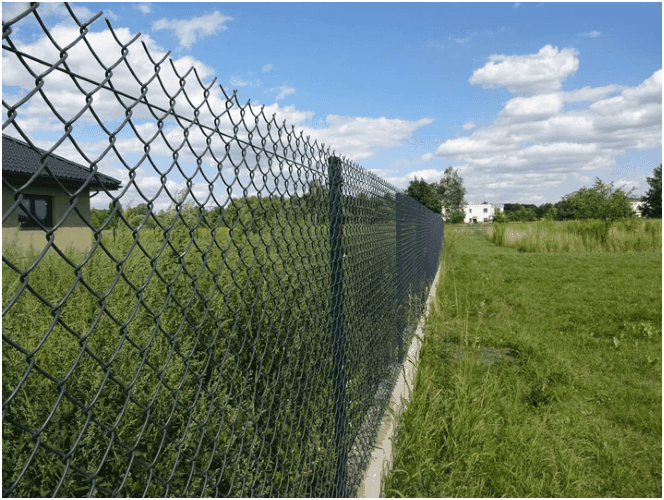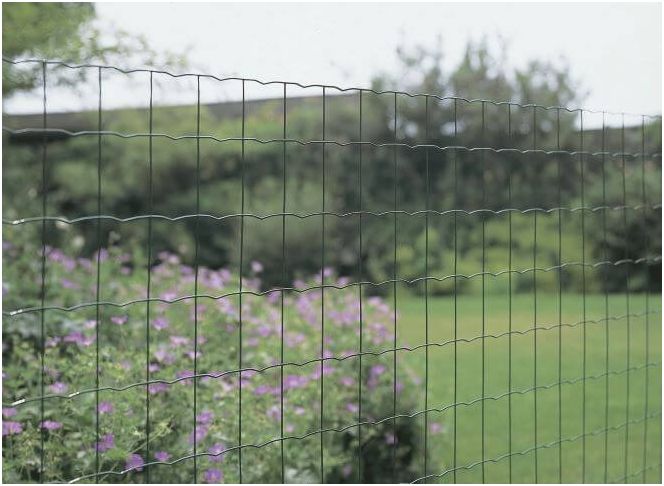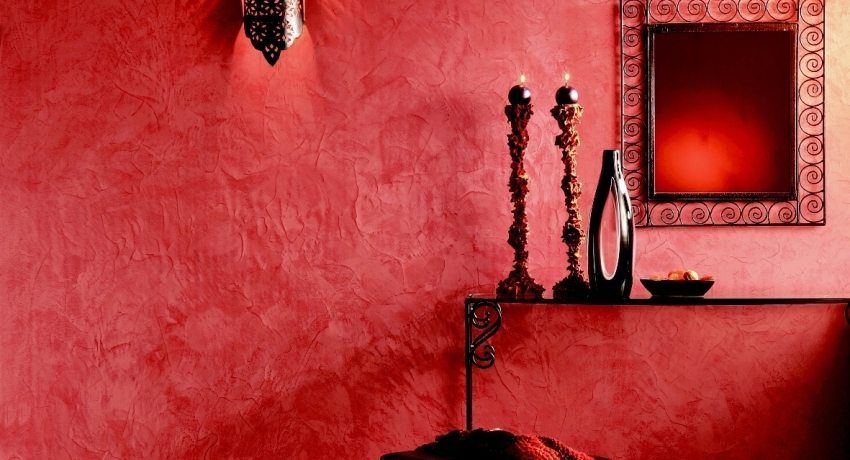Fence netting, due to its affordable cost and ease of assembly, is a popular way to demarcate your site. Moreover, a building permit is not required to install such a fence. In stores you can find galvanized and coated, welded and braided fence mesh.
Currently, to install a chain-link fence with your own hands, no permission is required. The exception is cases when a street, road, bad, railway or other public fence is being built or repaired, the height of which exceeds 2.2 m.However, in most cases, the height does not exceed the specified parameters.
There are different types of fence mesh. Let’s consider the most popular ones.
Coated fence mesh

This type of product is additionally coated with a layer of polyvinyl chloride (PVC). The material protects the fence from corrosion, mechanical damage and moisture. At the moment, stores offer many colors of such a grid, so they can be matched to the shade of the building..
It is good to know that pits can appear in the PVC material, which in turn lead to the formation of rust. Sometimes the color of the product fades, but after a certain period of time. Moreover, in the case of coated fences, the wire is thinner than that of galvanized materials. When deciding to install such a fence from a mesh with your own hands, when buying, it is also important to determine the thickness of the wire itself and its thickness along with the coating.
Galvanized mesh fence – types, scope
When choosing a product, remember that it does not have a PVC coating, but is covered with a layer of zinc. Galvanized mesh is cheaper than coated mesh. This, in turn, allows the selection of thicker wire, as a result of which the rigidity of the entire fence can be increased, as well as it will be more resistant to deformation..
Corrosion itself can occur in the case of this mesh in the places of scratches, the material can oxidize. This largely depends on the manufacturer and the quality of the wire. The environment also plays an important role here: depending on whether we live in a city, suburb or rural area, the aggressiveness of various factors affecting the material from which the mesh is built can be different. An additional disadvantage is the lack of color choice.
Welded fence mesh
It is a product that is easy to assemble and at the same time can be combined with other materials such as wood. It is distinguished by the fact that it is extremely rigid, in contrast to woven and hexagonal mesh. It will be appreciated by people who value elegance and high quality..
It is usually very resistant to corrosion and weather conditions, so it does not lose its appearance even after many years. Often these materials also come with a long-term warranty. Perfect for fencing a regular garden or for a farm for breeding animals.
Assembling the fence mesh

Interested in installing a mesh fence? The price of installation work will not be high due to the low cost of the material and the simple installation technology. The only problem can arise with uneven terrain. However, there are some basic activities to keep in mind..
Terrain leveling
Before carrying out the operation, you should clear the area from all unnecessary elements, and then delimit the fence. Next, you need to dig holes in which the pillars will be installed.
Pouring pillars and pouring concrete
The posts must be installed at the same height and depth. Then they need to be poured with concrete. In the case of a light fence, you do not need to build full-fledged foundations. Usually the pillars are installed at a distance of about 2-2.5 m and concreted to a depth of about 0.3-0.5 m. When installing, it is worth using a cement mortar with sand, gravel and water .;
To strengthen the structure of the enclosing structure, a foundation is created in advance. In such cases, you need to dig the foundation to a depth of about 1 m, and then make a pedestal that should protrude 30 cm above the ground..

